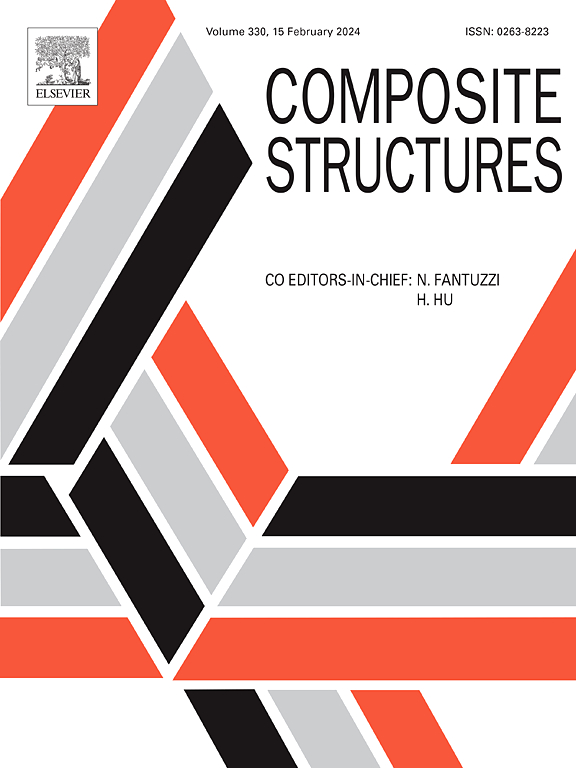Experimental and numerical investigation on mechanical properties and failure modes of SiC/SiC tapered laminates: Effects of ply drop location
IF 6.3
2区 材料科学
Q1 MATERIALS SCIENCE, COMPOSITES
引用次数: 0
Abstract
Aerospace laminated composite structures often require thickness variations along one or more directions in order to satisfy weight and aerodynamic efficiency requirements. Thickness variation is achieved by introducing dropped plies at appropriate locations. However, the influence mechanism of the ply drop location has not been adequately elucidated. In this work, the effect of ply drop location on the mechanical properties of tapered laminates has been investigated by experiment and simulation. Three different ply-drop configurations of tapered laminates were subjected to quasi-static tensile tests. The main failure modes are delamination and ply damage. Delamination can significantly reduce the load-bearing capacity of the structure. The simulation results are in good agreement with the test results in terms of failure load, load–displacement response, and delamination regions. The results demonstrate that the ply drop location affects the order of occurrence of the main failure modes of tapered laminates and the propagation path of ply damage cracks, thereby influencing their mechanical properties.
SiC/SiC锥形层合板力学性能及破坏模式的实验与数值研究:铺层位置的影响
航空航天层压复合材料结构通常需要沿一个或多个方向的厚度变化,以满足重量和气动效率的要求。厚度变化是通过在适当的位置引入下降层来实现的。然而,铺层位置的影响机理尚未得到充分的阐明。本文采用实验和模拟相结合的方法研究了铺层位置对锥形层合板力学性能的影响。对三种不同的锥形层压板进行了准静态拉伸试验。主要破坏形式为分层破坏和层合破坏。分层会显著降低结构的承载能力。在破坏荷载、荷载-位移响应、分层区域等方面,模拟结果与试验结果吻合较好。结果表明:层压位置影响了层压板主要破坏模式的发生顺序和层压损伤裂纹的扩展路径,从而影响了层压板的力学性能;
本文章由计算机程序翻译,如有差异,请以英文原文为准。
求助全文
约1分钟内获得全文
求助全文
来源期刊

Composite Structures
工程技术-材料科学:复合
CiteScore
12.00
自引率
12.70%
发文量
1246
审稿时长
78 days
期刊介绍:
The past few decades have seen outstanding advances in the use of composite materials in structural applications. There can be little doubt that, within engineering circles, composites have revolutionised traditional design concepts and made possible an unparalleled range of new and exciting possibilities as viable materials for construction. Composite Structures, an International Journal, disseminates knowledge between users, manufacturers, designers and researchers involved in structures or structural components manufactured using composite materials.
The journal publishes papers which contribute to knowledge in the use of composite materials in engineering structures. Papers deal with design, research and development studies, experimental investigations, theoretical analysis and fabrication techniques relevant to the application of composites in load-bearing components for assemblies, ranging from individual components such as plates and shells to complete composite structures.
 求助内容:
求助内容: 应助结果提醒方式:
应助结果提醒方式:


